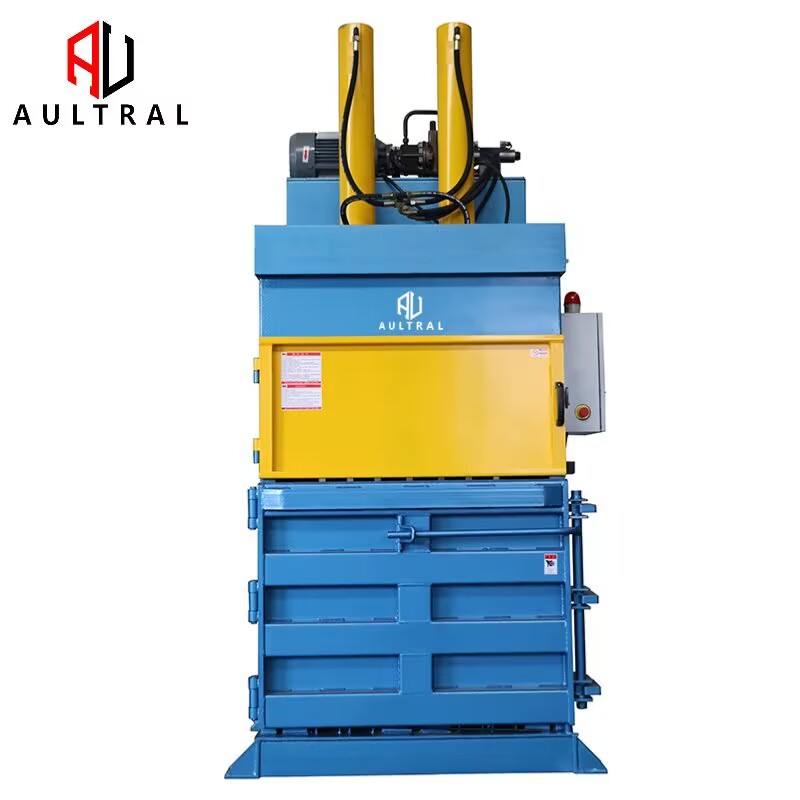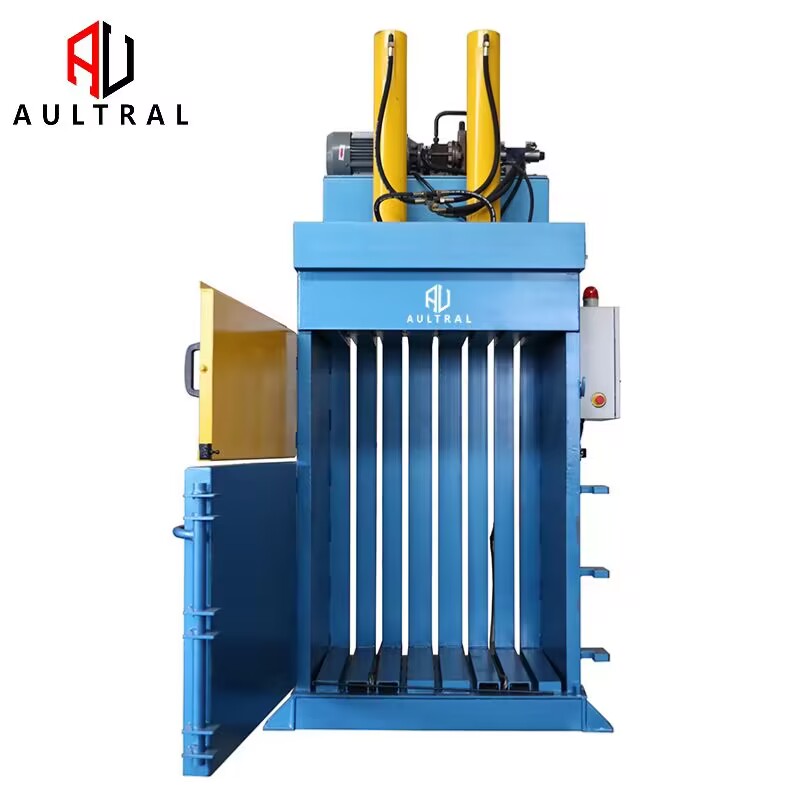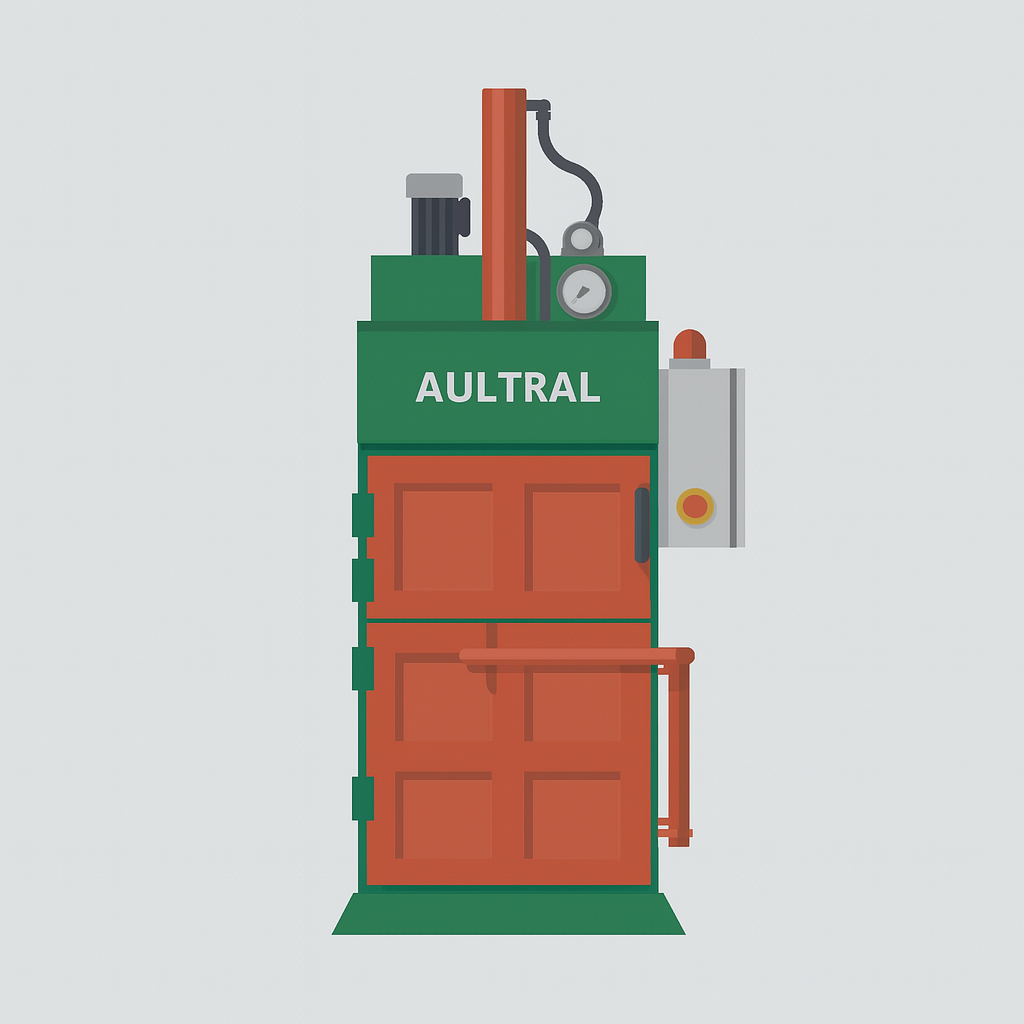Vertical balers have become an indispensable piece of equipment in waste management and recycling industries. Their compact design, cost-effectiveness, and versatility make them ideal for small to medium-sized businesses looking to efficiently handle recyclable materials like cardboard, paper, plastic, textiles, and more. This article explores the applications of vertical balers, analyzes their market potential, outlines development strategies, and discusses possible challenges and risks in the sector.
Applications of Vertical Balers
Vertical balers are used across various industries for compacting recyclable materials into dense, manageable bales. Key application areas include:
-
Retail & Supermarkets: For compressing cardboard boxes, packaging waste, and plastic wrap.
-
Manufacturing Plants: To manage production scrap like offcuts, textile waste, and plastic film.
-
Hospitality Industry: Hotels, restaurants, and event venues use vertical balers to minimize waste volume and reduce hauling costs.
-
Recycling Centers: As a primary or supplementary machine to prepare materials for transportation to processing plants.
-
Warehouses & Distribution Centers: For managing packing materials and keeping operational areas clean and efficient.
By reducing waste volume, vertical balers help companies save space, lower disposal costs, and improve environmental compliance.

Market Prospects
The global demand for vertical balers is growing, driven by increasing environmental awareness, government regulations on waste disposal, and the rising cost of landfill use. Several trends are shaping the market:
-
Urbanization and Industrial Growth: As cities expand and manufacturing increases, so does the need for compact waste management solutions.
-
Sustainability Goals: Businesses are investing in recycling infrastructure to meet ESG standards and reduce carbon footprints.
-
Rising Waste Volumes: The surge in e-commerce and packaging consumption globally contributes to a higher demand for compacting equipment.
According to market research, the vertical baler market is expected to grow steadily over the next 5–10 years, particularly in Asia-Pacific, Africa, and South America, where industrialization is accelerating and environmental policies are tightening.
Development Strategies
For manufacturers and industry players, several development strategies can help stay competitive:
-
Product Innovation: Develop balers with smarter control systems, energy-efficient motors, and improved hydraulic systems.
-
Customization Options: Offer machines tailored to specific materials (e.g., soft plastics, fiber waste) or client needs (e.g., compact models for small spaces).
-
After-Sales Services: Building a robust support and maintenance network to enhance customer satisfaction and retention.
-
Global Expansion: Focus on emerging markets with rising industrial demand and limited local competition.
-
Digital Integration: Incorporate IoT technology for remote monitoring, preventive maintenance alerts, and data tracking for recycling metrics.


Potential Problems and Risks
Despite its promising future, the vertical baler industry faces several challenges:
-
Operational Safety: Improper use or maintenance can cause accidents, making operator training and machine design critical.
-
Market Saturation in Developed Regions: In mature markets, competition is intense, and price wars may erode profit margins.
-
Raw Material Prices: Fluctuating steel and hydraulic component prices can impact manufacturing costs.
-
Regulatory Hurdles: Different countries have varying compliance requirements that can complicate exports and certification processes.
-
Waste Market Volatility: If demand for recycled materials drops, users may reduce investment in baling equipment.
Conclusion
Vertical balers play a crucial role in modern waste management systems and present strong opportunities for growth, particularly in developing markets. Manufacturers and distributors should focus on innovation, service, and adaptability to remain competitive. However, they must also be aware of the operational, financial, and regulatory risks that come with this expanding market. With the right strategies, vertical balers will continue to support the global shift toward a cleaner, more sustainable future.

